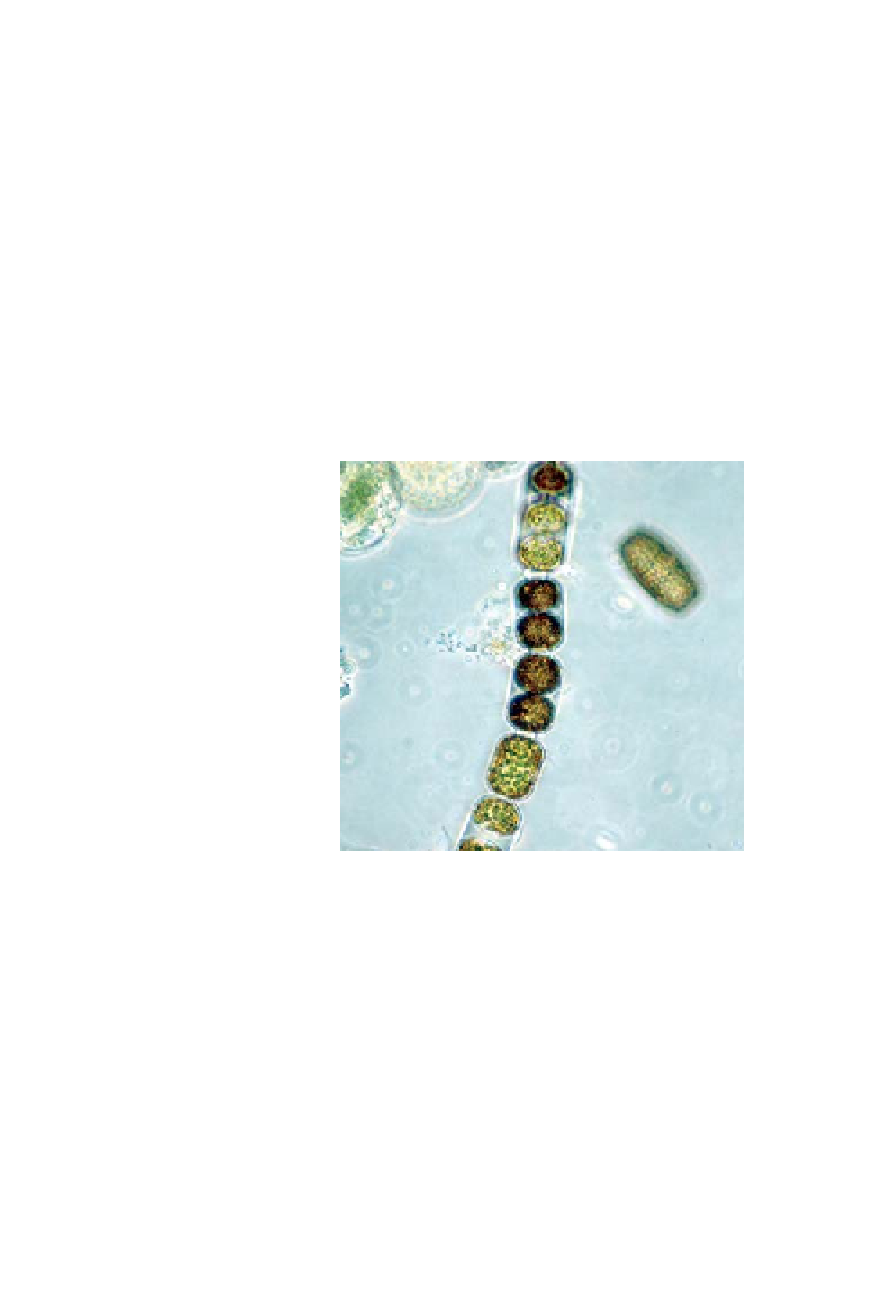Biology Reference
In-Depth Information
feeding clams, worms, and sponges. These bottom-dwelling species are, in
turn, snapped up by organisms ranging from birds to fish, completing the
link to the rest of the food web. Any plankton missed by these mouths
decays into fertilizer.
Phytoplankton
are the single most abundant source of food in the bay.
Made up of simple plants, including single-celled, silica-walled algae
called diatoms, as well as dinoflagellates and cyanobacteria, phytoplank-
ton perform photosynthesis to transform mineral nutrients and sunshine
into energy other creatures can eat. Phytoplankton range in size from
roughly three-quarters of an inch to less than a millionth of an inch, and
they include more than 5,000 marine species. Most live and die in the
space of a few days.
These
Melosira
sp. dia-
toms are among the phyto-
plankton responsible for
algal blooms. Diatoms con-
struct distinctive walls of
silica that fit together like
the halves of a pillbox.
Using green chloroplasts
such as those visible in
this image, phytoplankton
conduct roughly half of the
photosynthesis that occurs
on Earth. Conditions must
be just right for plankton to
bloom in murky San Fran-
cisco Bay. The winds that
stir up water layers must
weaken, so that freshwater
runoff remains as a clear
layer atop the bay's salty waters. Such water stratification encourages blooms in
two ways: (1) sunlight penetrates deeper into the water column, reaching more phy-
toplankton, and (2) phytoplankton linger near the surface, far from the hungry
mouths below. (Cary Burns Lopez)
Paddling about amid the phytoplankton and fish are the minute
group of animals known as
zooplankton
. Unlike their photosynthetic
neighbors, zooplankton cannot manufacture their own food from sun-
light. Instead, they eat phytoplankton and one another in order to sur-
vive. This diverse group includes shrimplike copepods, microscopic roti-
fers, water fleas, and larval crabs up to half an inch in length. Over 200
species of zooplankton, many of which are non-native, can be found in
the San Francisco estuary.
Larger zooplankton, such as Mysid Shrimp, migrate up and down the
water column. They rise to the surface to feed at night, when they are less
likely to be seen by predators, and return to the depths during the day.

